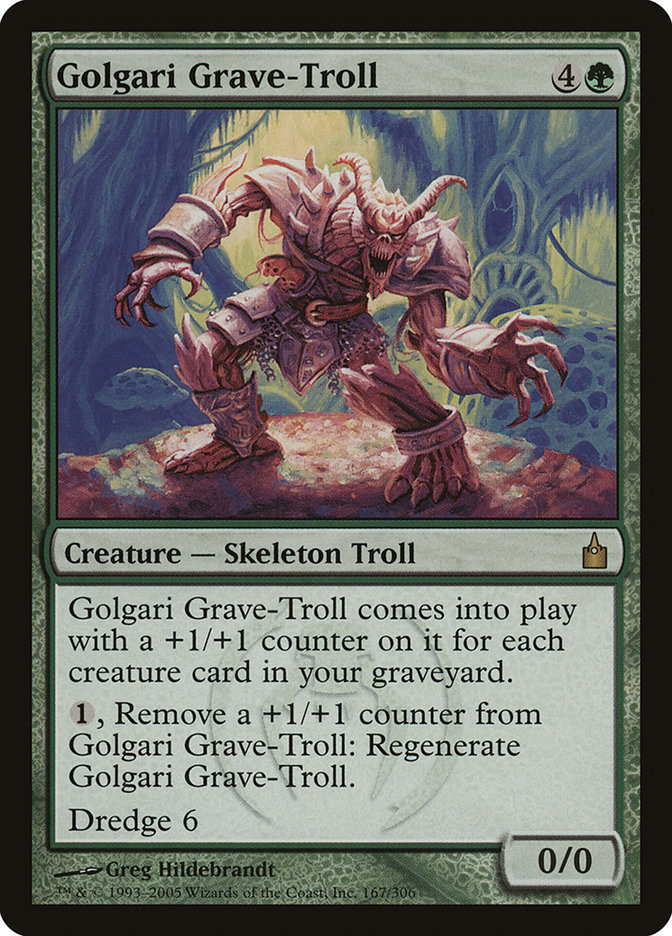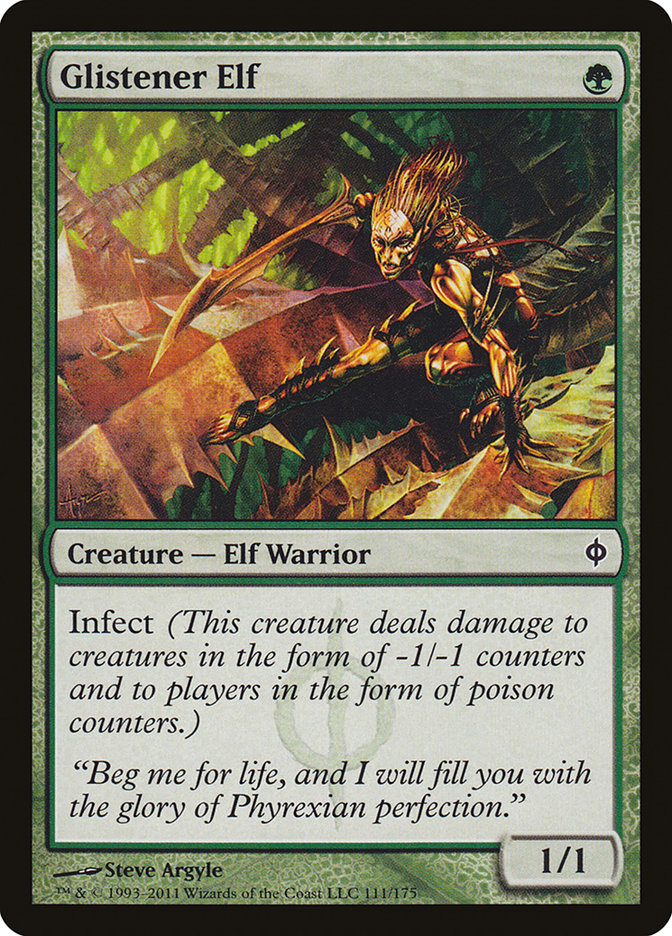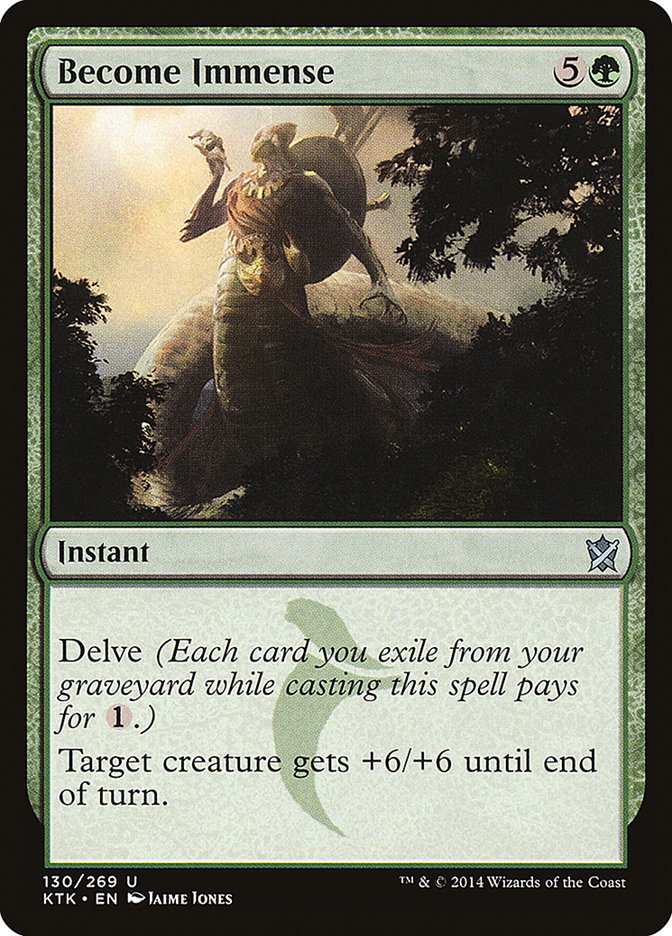Hey, do you all remember this guy?
Creatures (13)
Planeswalkers (4)
Lands (24)
Spells (19)

Used to see him all the time, both across from me at the tournament hall and sometimes even on my side of the table. Seriously, some weekends it felt like I couldn’t get away from him. Every round I’d sit down to my match, convinced that this time I had managed to escape. Then, a couple of turns in, I’d see the telltale Blackcleave Cliffs into Thoughtseize and know that good old Jund had found me yet again.
Don’t get the wrong idea; I wasn’t always trying to run away from Jund. Truth be told, I like the old guy. He’s kind of annoying at times, to be sure, the way he tells the same stories over and over again. I’m sure I’ve heard the one where a lone Tarmogoyf backed up by removal wins the game a million times by now, and don’t get me started on how often I’ve heard the punchline, “…and then, get this, they didn’t kill my turn 2 Dark Confidant.”
Whoa, I got a bit carried away there. Still, now that he’s gone, I find myself missing good old Jund. We had some good times together, after all. But ever since the release of Aether Revolt and the accompanying bans, I haven’t really seen Jund around anymore. I remember standing around laughing with Jund when the bans were announced. He was so excited that Dredge was being taken down a peg, and nearly died from laughing when he heard about the Gitaxian Probe ban. His exact words in-between bouts of laughter were: “When did Infect ever beat me anyway?”
That’s my last memory of Jund, confidently laughing and sure that he would find the same place of pride in Aether Revolt Modern that he had always enjoyed. But in the two months since Aether Revolt, Jund hasn’t gotten out of the house very much. He didn’t make it out to the Top 8 of either of the two Modern Grand Prix that have been held, nor did he make an appearance at either SCG Tour Modern Open Top 8. He couldn’t even be bothered to get out of bed for SCG’s Team Open Top 4, and we all know how much Jund loves an audience.
I’m starting to get worried. This is out of character for Jund. Sure, he’s been known to miss an event here and there, and people would always start to fret. His age is finally catching up to him, they’d say, Modern is a young deck’s game and Jund just doesn’t have what it takes anymore. But then the next event would come along and there he’d be, smiling and insisting that he had never felt better. Honestly, I thought the old deck would live forever.
I’ve done some initial sleuthing, and Jund hasn’t been completely negligent in keeping his social calendar. He made it out to one of the four SCG Tour Classic Top 8s, but for a socialite of Jund’s caliber, that’s nothing. Like I said, Jund’s a friend of mine. I’m not needlessly snooping into his personal life; I just want to make sure he’s all right. I’m going to figure out what happened to Jund.
Then and Now: Aether Revolt Bans Edition
Jund’s social slowdown started with Aether Revolt, so it is there I turn first. It’s been two months since the bans; how did those turn out?
Dredge: then and now.
Before the Aether Revolt ban of Golgari Grave-Troll, Dredge was a menace. If it wasn’t Public Enemy Number One right before Golgari Grave-Troll got banned, it was very close. The narrative surrounding Dredge at that point in time was that Golgari Grave-Troll was simply too good. After all, Dredge was not a real deck prior to Troll getting unbanned. It stood to reason that, after Troll got banned again, Dredge would once again be relegated to the realm of unplayable.
Creatures (24)
- 3 Golgari Thug
- 4 Stinkweed Imp
- 4 Narcomoeba
- 4 Bloodghast
- 4 Prized Amalgam
- 4 Insolent Neonate
- 1 Haunted Dead
Lands (21)
Spells (15)
Sideboard

Turns out, that was not the case. Dredge is certainly weaker now than it was before the banning of Golgari Grave-Troll, but it is far from unplayable. The logic that said Golgari Grave-Troll was the driving force behind Dredge’s success was flawed. Two things happened relatively close together that both impacted Dredge’s success: the unbanning of Golgari Grave-Troll and the printing of Prized Amalgam. In retrospect, Prized Amalgam deserved far more of the credit for Dredge being a real deck than it received and is powerful enough to allow Dredge to continue to win even without Golgari Grave-Troll.
So reports of Dredge’s death were greatly exaggerated. But still, the deck is weaker now than it was before. Dredge is not a great matchup for Jund, but Jund did well enough for himself even in the era of high-powered Dredge. It’s not like Jund was counting on the death of Dredge so that he could make a grand comeback. No, Dredge being better post-ban than expected hurts Jund, but we need to look elsewhere for the cause of Jund’s disappearance.
Infect: then and now.
Infect did not do quite as well as Dredge after the banning of one of its key cards. To the contrary, Infect is, for all intents and purposes, nowhere to be found these days. In the two months since the ban of Gitaxian Probe, Infect has not managed a single Grand Prix or SCG Tour Open Top 8. Unlike Jund, it hasn’t even put up a SCG Tour Classic Top 8. But hey, Infect did get an SCG Regionals Top 8. That’s something, I guess.
Creatures (15)
Lands (20)
Spells (25)

Infect performing so poorly since the Aether Revolt bans is certainly a contributing factor to Jund’s disappearance. Jund preyed on Infect, so Infect falling off the map means Jund has fewer good matchups floating around the top tables. Further, Infect preyed on a lot of the decks that Jund was weak to, like Tron and Primeval Titan strategies. Without Infect to keep those decks in check, many more dangerous matchups await Jund on his path to a Top 8.
Still, the Jund I knew wouldn’t let the loss of easy wins and the appearance of a few more bad matchups keep him down. There must be more to it!
Death’s Shadow: then and now.
Unlike Dredge or Infect, Death’s Shadow strategies have not simply become lesser versions of their old selves. Instead, they have gone through a metamorphosis and emerged arguably stronger than before. Certainly, at the very least they are better-suited to attack the current Modern metagame than the old versions were to attack their metagame. Death’s Shadow is the current scourge of Modern.
Creatures (13)
Planeswalkers (2)
Lands (18)
Spells (27)

This new version of Death’s Shadow is a very bad thing for Jund. First, it has replaced the old combo variants of Death’s Shadow, which were decent matchups for Jund. It wasn’t incredibly favorable, but the standard Jund gameplan of “kill their creatures and win with a Tarmogoyf or a Scavenging Ooze” worked well. You could often strand their pump spells in their hand, useless without any creatures to play them on.
The new variants are way more resilient then that. They no longer play the pump spells we gained virtual card advantage from. Instead, they play ways to keep the creatures coming, like Kolaghan’s Command and Ranger of Eos. That’s a problem. Further, these new versions essentially blank Lightning Bolt! No longer do they play weak creatures like Steppe Lynx that can be Bolted; now they play a virtual fourteen copies of Death’s Shadow and Tarmogoyf. Not only are these creatures excellent against the removal Jund favors, they don’t get outclassed by Jund’s Tarmogoyfs. What a disaster.
Lightning Bolt is the heart of Jund in many ways. If Lightning Bolt isn’t good in the current Modern format, maybe it shouldn’t be a surprise that Jund isn’t good either. The recent bans made Lightning Bolt much worse, populating the top tables with non-interactive land-centric strategies, killing off Infect, and causing the best creature deck to move away from creatures weak to Lightning Bolt. Case closed. Or is it?
Sibling Rivalry: Sister Abzan
All this Lightning Bolt talk has me curious about the fate of that other green and black deck, Jund’s sister Abzan. The two have had a bitter rivalry over the years, each gathering many fervent disciples to their cause. Historically, Jund has had two main advantages over his sister, Blackcleave Cliffs and Lightning Bolt. Well, as of Kaladesh, Abzan gained her Blackcleave Cliffs equivalent, Blooming Marsh. But hey, those of us on the side of Jund still have Lightning Bolt, right?
Sure, the rise of Death’s Shadow as the premier creature deck of the format has made Lightning Bolt worse in Modern than it has been in a long while. But even so, there are still plenty of decks roaming around with lots of early creatures that need answering, and Path to Exile on a one-drop is a huge loss of tempo. Well, Aether Revolt changed Modern in more ways than just banning cards. The set added multiple relevant cards to the mix, Fatal Push being the one most relevant to the disappearance of Jund.
It’s true that Jund could play Fatal Push itself. It would probably even be good, a one-mana answer to any of the threats in Death’s Shadow without even needing revolt enabled. But its printing has eroded the last bastion of Jund’s defense against his sister. With Abzan having access to a one-mana removal spell on the same level as Lightning Bolt, what reason is there to play Jund over Abzan?
Creatures (14)
Planeswalkers (4)
Lands (22)
Spells (20)

Jund’s disappearance is not a family malady; Abzan has been doing fairly well for herself recently, with a Grand Prix Top 8, a Modern Open Top 8, and numerous Classic Top 8s to her name in the months since Aether Revolt. So there we have it: recent bans have caused a metagame where Lightning Bolt and Jund its champion are poorly positioned, and recent printings have allowed Abzan to step up as the green and black strategy of choice. Happy retirement, Jund.
No, that can’t be the end of this story. Jund has survived hostile environments before, and he can do so again. This isn’t the first time Abzan has been proclaimed as strictly superior to Jund, and every time before, Jund has proved all his naysayers wrong. There’s something yet missing from our analysis.
Most of the time, maybe 85%, Lightning Bolt is exactly what we’ve been treating it as: a one-mana removal spell that deals with smallish creatures. Fatal Push is an admirable replacement for this role of Lightning Bolt; it might even be better with its ability to kill Kalitas, Traitor of Ghet or Siege Rhino when the need arises. But no matter how many times you trigger revolt, Fatal Push can never remove “target player.” Lightning Bolt can hit the face, and that small, not often great ability gives Jund in-game maneuverability that Abzan can only dream of. Thanks to Lightning Bolt, Jund can switch roles at the drop of a pin, turning the corner in a game with supreme ease.
No, I won’t give up on Jund quite yet.
A Triumphant Return?
What will it take to get Jund to show his face in public once again? Clearly, the deck needs to adapt. It’s a brand-new Modern world out there, and if Jund doesn’t want to live the rest of his life in the shadow of his sister Abzan, the old dog’s going to have to learn some new tricks. And they’d better be red tricks, if Jund wants to stay a step ahead of that Abzan sister of his.
Creatures (13)
Planeswalkers (4)
Lands (24)
Spells (19)

A lot of this list looks like a journey back in time to the old days of Jund, not like a shiny new Jund ready for a new Modern world.
Grim Flayer has been in and out of Jund lists since its printing, more often in than out. I think the time has come to give Grim Flayer the boot. A 4/4 body is not impressive against Death’s Shadow, the most popular creature deck in the format, and the weird one-of delirium enablers like Tarfire and Seal of Fire are wholly unimpressive right now. Scavenging Ooze, on the other hand, is very good right now, disrupting opposing Kolaghan’s Commands and managing our opponent’s delirium count as well as manipulating Tarmogoyf size.
Fatal Push is shiny and new, however, and is incorporated into this list as a cheaper Terminate. It also enables the main new trick that this version of Jund employs: Kalitas, Traitor of Ghet. Kalitas is excellent against Death’s Shadow, allowing Jund to not fall behind while playing the “kill everything that moves” game. Importantly for the viability of Jund over Abzan, Kalitas is essentially a red trick. Kalitas without cheap removal is no good, and Abzan can’t generate nearly the same quantity of non-exile cheap removal that Jund can. Lightning Bolt is essential for making Kalitas viable against the wide-open Modern field.
Dealing with Death’s Shadow is the main priority for any Modern deck right now, and Jund is no exception. Kalitas is a good start, but this Jund maindeck has also adapted to Death’s Shadow by ensuring that aside, from the necessary four Lightning Bolts, none of the removal matches up poorly against Death Shadow. We’re not trying to get cute and hedge with a mainboard Collective Brutality or Liliana, the Last Hope; our spells kill Tarmogoyfs and Death’s Shadows. Period.
The loss of Infect from the metagame means Jund can’t just hope to dodge Tron all day; we need a plan for non-interactive land-based strategies. This list uses two copies of Blood Moon and three copies of Fulminator Mage to that end. Five sideboard slots dedicated to Tron and Primeval Titan would historically be considered overkill, but I believe it is necessary right now.
Blood Moon does more than just give us game against land strategies, however. It’s secretly very good against Death’s Shadow. The Death’s Shadow decks run atrocious manabases because they want to fetch-shock themselves to a low life total anyway. Not only does Blood Moon do its typical job of stopping them from casting spells, it takes away most of their life total control. Under a Blood Moon, Death’s Shadow can’t cast additional threats or make the threats it’s already deployed any bigger. I have hope that Blood Moon can be one of the tricks Jund needs to take its place once more in the limelight of Modern.
You can wish on these things, right?













